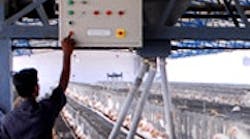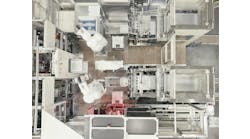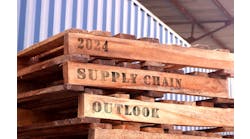SEE ALSO: Packager Optimizes the Interfaces
Many reasons exist to explain this shift. Robots are more affordable, and the flexibility allows manufacturers to automate a variety of processes while reducing changeover times and expensive tooling. Also, system integrators now take on the job of deploying robotic systems, shifting the focus from the robot manufacturers. With the expertise to integrate not only robotics but all the equipment in the packaging line, system integrators can assist in auditing the packaging line from end to end to maximize the potential of robotics automation.
Auditing the existing process is critical to the success of any automation project. It not only allows the company to fully understand the current process, but it is helpful when writing the equipment specification and calculating ROI. A thorough audit gives all parties in the decision-making process an understanding of how the investment will save time, money and resources. An audit also allows packagers to understand which parts of the process are most suited to automation and gives them the ability to prioritize. Automating a production line doesn't need to happen all at once. A complete system audit allows a company to understand its current strengths and weaknesses and put the money where it will have the greatest impact.
By assessing the current process, packagers can identify the areas that will benefit from robotics automation. This includes quantifying current staffing requirements for the production line, as well as pinpointing weak areas in the line's efficiency. It also is important to note the line's overall downtime and the reasons for that downtime, as well as the current scrap and rework rates.
The audit also should consider the facility and the environment where the equipment will operate. Factory floor space is expensive, and robotic solutions typically occupy a small footprint. In addition, robotic systems offer the flexibility to perform multiple processes within a single cell. For example, a robotic cell with properly designed end-of-arm tooling (EOAT) and controls can de-puck, inspect, reject and load product into trays. In a secondary packaging line, EOAT may be designed and programmed to pick and place multiple bottles into a crate, nudge the bottles into the final position and place tier sheets between layers.
By understanding the current process, packagers are better equipped to evaluate the cost advantages of automating their production or packaging lines. Models such as return on investment (ROI) and total cost of ownership (TCO) allow those making the purchasing decisions to justify the expense or justify a partial solution that fits the budget. While either of these models works well enough individually, to fully evaluate the potential cost savings of an automated system, both models must be employed. Categories for cost savings such as increased speed and reduced scrap, rework and personnel injury belong in an ROI calculation. The impact of reduced changeover time, repeatable changeovers, fewer change or spare parts and clean-room consumables such as gowns belong in a TCO calculation.
Cost calculations also must include a full understanding of operational cost savings over time. Too often, the purchasing decision is based solely on the initial capital purchase, but a system designed after a thorough audit has greater value due to reduced changeover time, repeatable changeovers and reduced change parts. For example, consider two fictional packaging companies who have each purchased a new case packer running two different products. Both companies secured identical quotes for two solutions: a conventional case packer for $210,000 and a robotic case packer for $235,000. Company A installed the conventional case packer, not wanting to spend the extra $25,000. Company B selected the robotic case packer. In the first year of operation, the required changeover time was the primary difference between the two systems (7 min for Company B vs. 17 min for Company A). Company A's system also required 5 min of tweaking after changeover before going into full production, which Company B's robotic system didn't require. At one changeover per shift, two shifts per day, this makes Company A's changeover downtime more than 220 production hours per year, while Company B spends only 71 hours per year on changeovers.
The next year both companies add a new product that runs on the same cell. For Company A, the cost of the change parts is three to four times more expensive than the robotic system. In addition, the additional changeover time adds another 220 hours of downtime annually. Company B only needs a new quick-change EOAT and some revisions to the programming. The cost is reasonable and the changeover time is still less than 10 minutes.
When one factors in these scenarios, the cost for robotic automation becomes easy to justify but only when TCO factors are taken into consideration during the audit. Robotics system integrators can help packagers understand the impact of a well-performed audit of the current process and the advantages of cost savings and productivity that robotics automation has to offer packaging processes.




